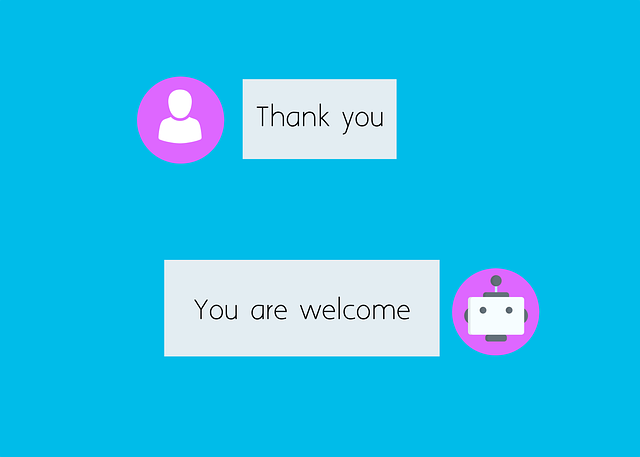Evaluating chatbots requires acknowledging their strengths like automating tasks, offering support, and personalizing interactions through NLP and machine learning. However, they struggle with complex queries and maintaining conversation flows. Ethical considerations such as data privacy and transparency are vital for responsible implementation. Designing a chatbot with advanced NLP and adaptability ensures a superior user experience, fostering connection and satisfaction. In the digital era, chatbots assist businesses in problem-solving, integrating with CRM, automating leads, and learning from interactions. Measuring performance through KPIs like response accuracy, time, and user satisfaction is crucial for improvement, making them valuable assets for both users and businesses.
In today’s digital landscape, chatbots have become ubiquitous, offering instant support and enhancing user experiences. But choosing the right one involves understanding its capabilities and limitations. This article guides you through essential features for a top-notch chatbot, from basic conversational skills to advanced functions that can drive business success. We’ll also explore evaluation methods to ensure your chatbot delivers on its promise, ultimately transforming customer interactions into powerful relationships.
- Understanding Chatbot Capabilities and Limitations
- Essential Features for Enhanced User Experience
- Advanced Functions for Business Success
- Measuring and Evaluating Chatbot Performance
Understanding Chatbot Capabilities and Limitations

When evaluating a chatbot, it’s crucial to have a clear understanding of its capabilities and limitations. Chatbots are powerful tools designed to automate tasks, provide customer support, and offer personalized interactions, but they aren’t omniscient or infallible. They operate based on predefined algorithms, natural language processing (NLP), and machine learning models. These technologies enable chatbots to understand and respond to user queries, learn from interactions, and adapt over time.
However, chatbots have limitations. They might struggle with complex or nuanced questions that require deep knowledge or empathy. Contextual understanding can be challenging for chatbots, as they often lack the ability to maintain a continuous conversation flow without human intervention. Moreover, ethical considerations, such as data privacy, transparency in interactions, and avoiding biased responses, are essential aspects that developers must address to ensure responsible chatbot implementation.
Essential Features for Enhanced User Experience

When crafting a chatbot, prioritizing essential features is key to delivering an enhanced user experience. Among the most crucial are natural language processing (NLP) capabilities, enabling conversations that feel organic and human-like. Advanced NLP ensures the chatbot understands a wide range of user inputs, context, and intent, leading to more accurate responses and a smoother interaction flow.
Another vital feature is adaptability. A sophisticated chatbot should be able to learn and evolve based on user interactions, personalizing responses over time. This includes leveraging machine learning algorithms to recognize patterns, anticipate needs, and tailor the conversation accordingly. Such adaptability not only improves user satisfaction but also fosters a sense of connection, making the chatbot feel more like an intelligent companion rather than just a tool.
Advanced Functions for Business Success

In today’s digital landscape, a chatbot is no longer just a simple tool for basic customer service; it’s an advanced function that can significantly boost business success. These AI-powered assistants have evolved to become sophisticated problem solvers, capable of handling complex queries and tasks. With natural language processing (NLP) at the core, chatbots can understand and interpret human language nuances, providing contextually relevant responses. This enables them to assist customers more effectively, resolve issues promptly, and even offer personalized product recommendations.
Moreover, advanced chatbot features such as integration with CRM systems allow businesses to gather and utilize customer data efficiently. They can automate lead generation, qualifying leads based on predefined criteria, and routing qualified prospects to the right sales teams. By leveraging machine learning algorithms, chatbots continuously learn from each interaction, improving their accuracy and adaptability over time. This adaptive behavior ensures that your chatbot remains a valuable asset, constantly evolving to meet changing business needs and customer expectations.
Measuring and Evaluating Chatbot Performance

Measuring chatbot performance is crucial to ensure its effectiveness and usability. Key metrics include response accuracy, which evaluates how well the chatbot understands user queries and provides relevant answers. This can be assessed through A/B testing, where different chatbots or responses are compared for their success in addressing user needs.
Additionally, response time and user satisfaction play vital roles. Faster response times enhance the overall user experience, while high levels of user satisfaction indicate successful interaction with the chatbot. Regular monitoring and analysis of these metrics allow for continuous improvement, ensuring that the chatbot remains a valuable tool for users and businesses alike.
When selecting a chatbot, it’s crucial to balance understanding its capabilities and limitations with focusing on essential features that enhance user experience. Incorporating advanced functions can drive business success, but always measure and evaluate performance to ensure optimal results. By considering these aspects, you’ll be well-equipped to choose a powerful and effective chatbot tailored to your needs.
